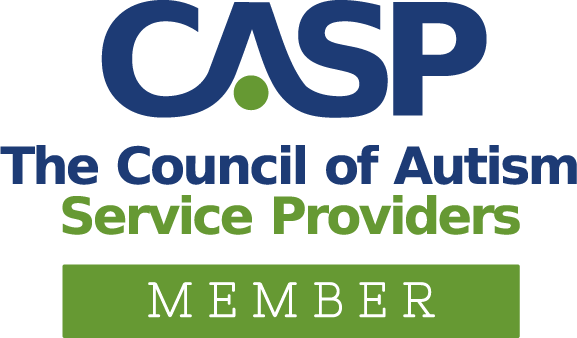Experts working with individuals on the autism spectrum all agree that early intervention for autism is vital. We now know more about Autism Spectrum Disorder than ever before. Children with autism can be diagnosed as early as 18 months. Autism screening tools and the role of developmental pediatricians have become essential as we have come to recognize early warning signs sooner and more comprehensively.
Early autism screening ensures no child slips through the cracks, especially with the increasing prevalence of autism in young children today. As parents, we want what’s best for our children, but we don’t always know where to start. Early screening is an excellent jumping-off point!
At this point, The consensus among autism professionals is that specific treatment components like intensity, generalization, family involvement, and data are required for developmental success with autism. Many programs for children with autism currently have various philosophies and designs, but one remains the gold standard: Applied Behavior Analysis (ABA).
What Is ABA?
Applied Behavior Analysis is an evidence-based behavioral modification approach designed to provide critical intervention to individuals (primarily babies, toddlers, and elementary-age kids) with autism. Most commonly, it is for children experiencing delays related to their developmental milestones.
Early intervention with ABA can be a life-altering experience for many children that helps build skills early. These are tools children will use for the rest of their lives. Another benefit of ABA and early intervention is that behaviors are shaped before they are overly learned or engrained.
Early intervention with ABA can often help with severe delays and problematic behaviors before they worsen. Within the field of ABA, professionals examine and analyze the collected data to understand what drives behavior. This includes its function and the surrounding environment.
Additionally, ABA works to bring a resolution to problematic behaviors and build on new positive skill sets. As a result, ABA therapy is a beneficial and innovative approach for working with children with autism.
Why Is Autism Early Intervention So Critical to ABA Therapy?
While ABA treatment can be effective for individuals of all ages, data has proven that therapy is most effective for children when they begin before age 5. For a program to be deemed “early intervention,” it must start before the child reaches four. With that said, many children will begin therapy between 18-30 months old.
While this may seem extreme, the American Academy of Pediatrics recommends that all children between 18-24 months be screened for autism. Doing so ensures children do not go undetected and miss the treatment they need. Knowing your child has or may have autism early makes it easier to shape behaviors and improve the ability to learn.
What Else Do I Need to Know About ABA Treatment?
There are many benefits of ABA therapy for children. Still, they come with hard work from a fantastic therapist and the child. Families and the surrounding team also play a role in developmental success, so everyone must be a team player. Often children with autism who receive early intervention spend a minimum of one year receiving services.
Some children attend daily sessions equating to more than 25 hours a week. It is critical to remember that every child has unique strengths, capabilities, and needs that will dictate so much of the program. The Board Certified Behavior Analyst (BCBA) assigned to your case will assess your child to produce a treatment plan that is individualized to your child’s needs. ABA therapy should never be a one-size-fits-all treatment.
What Are the Benefits of Early Intervention?
Children with autism enrolled in an early intervention ABA program have an increased likelihood of building massively critical developmental skills. These include social skills, language, and communication. Studies also show that, over time, ABA therapy can help raise a child’s IQ with early intervention.
What Is the “Plastic” Brain?
The reason there is such an emphasis on early intervention is pretty straightforward. It has to do with the brain’s ability to form new connections (known as plasticity). While the brain can do this throughout life, there are sensitive periods in brain development where it is most ready and has the most significant capacity to change.
This change is based on the child’s experiences. Experiences alter brain function and development. Children with autism have foundational deficits in how they consume information from the world around them. If that can be modified, it may be possible to minimize the effects of ASD.
Studies now measure age-equivalent scores in children with autism. Children receiving 20 or more hours of ABA therapy during early childhood are more likely to attain age-equivalent scores than peers who received little to no treatment. Additionally, the verbal skills of children who received treatment through age five improved more rapidly over seven years than peers who received little or no treatment.
Other studies showed that in children who started early intervention by age two (including behavioral, speech, occupation, and special education services), some had erased their signs of autism altogether by age six. While there is no cure for autism, for some children, early intervention with ABA can ease their lives remarkably and catch them up to their peers.
In another study that involved 1 out of 80 children with autism, at 2 years old, the children moved higher on the autism spectrum by age 9. In addition, 20% of them moved out of the spectrum. These are considered by many to be optimal outcomes. While for some, it will not be possible, it does happen. Many believe such progress is the result of the targeted approach of the treatments now available. ABA is the most studied, supported, and understood therapy for autism.
What Does a Behavioral Approach Entail?
As mentioned earlier, the core behavioral approach for autism is Applied Behavior Analysis. It encompasses structured teaching, most often on a one-to-one basis. A reward system is created to motivate the child’s achievement of goals and learning. Some essential instructions of ABA are how to make appropriate eye contact and use speech as communication. Rewards are typically access to a preferred item or activities, snacks, stars, and praise, among many other reinforcers.
Classic ABA principles work to increase certain behaviors by rewarding them. Data collection and record-keeping are vital to the integrity and effectiveness of any ABA program. The Registered Behavior Technicians (RBTs) and Board Certified Behavior Analyst (BCBA) working with your child will take attentive notes on your child’s progress and ability. BCBAs will measure behaviors to evaluate patterns and new understandings. RBTs will enhance improvement and look at how effective a program is. Anything that is not working will be discontinued or modified.
Usually, your BCBA will include discrete trial teaching in their treatment plan. Discrete trial teaching includes taking practical tasks and breaking them into their most minor steps, which are taught individually. Additionally, RBTs will introduce verbal behavior and language.
How Can ABA Help a Child So Young?
Getting a diagnosis is only the first step. Working with a child in their early life stages would incorporate teaching the child and their parents. In most cases, the BCBA would focus on a few primary goals. These would be things like strengthening the parent’s skills around coping with a neurodivergent child, learning age-appropriate play skills, and ways to interact that encourage joint attention. The child would work on socialization and communication skills in a nursery-like setting.
Ongoing studies show transformative results in socially engaging, communicating, appropriate play, and substantial positive parenting shifts when treatment starts in early development.
What Is Autism Spectrum Disorder Exactly?
Autism Spectrum Disorder is a developmental and neurological condition characterized by three core deficits:
- Impairment with socialization and relationships
- Challenges in communication through language
- Repetitive, restrictive patterns of behavior, interests, or activity
It is essential to recognize that this condition occurs along a spectrum. The level of severity can be varied among patients. Autism can be diagnosed at any time in an individual’s life. It is described as a developmental disorder because symptoms are believed to manifest in the first two years of life.
The Future of Autism Therapy
The future is hopeful, considering the science, data, and what is being communicated about the power of early intervention for autism. We look towards a more accessible and inclusive future for the neurodivergent. We can now create treatment plans to help toddlers build skills they will value for a lifetime. The goal isn’t to cure autism but to enrich the lives of those touched by it. The more we understand, the more help there will be for families seeking a better quality of life for their children.
Early Intervention at ABA Centers of America
ABA Centers of America values early intervention. We see the difference it makes in families’ lives and the ease it can bring to everyday living. For more information about our services, who we are, and how we can help, call us at 844-923-4222 or visit abacenters.com. We have no waiting list and accept most insurance plans.







